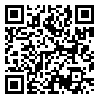Volume 24, Issue 3 (2024)
MCEJ 2024, 24(3): 29-44 |
Back to browse issues page
Download citation:
BibTeX | RIS | EndNote | Medlars | ProCite | Reference Manager | RefWorks
Send citation to:



BibTeX | RIS | EndNote | Medlars | ProCite | Reference Manager | RefWorks
Send citation to:
Ranjbari M, amiri M, Faghihi M. Location of the Optimal Landfill for Urban-Industrial Waste in Bandar Abbas and the Persian Gulf Special Economic Zone with the Approach of Fuzzy MCDM. MCEJ 2024; 24 (3) :29-44
URL: http://mcej.modares.ac.ir/article-16-66931-en.html
URL: http://mcej.modares.ac.ir/article-16-66931-en.html
1- PhD Student, Islamic Azad University of Qeshm Branch, Faculty of Engineering, Qeshm Island, Iran.
2- Associate Professor, University of Hormozgan, Faculty of Engineering, Bandar Abbas, Iran. ,Eng.amirii.mohammad@gmail.com
3- Assistant Professor, The Research Center of Islamic legislative Assembly, Tehran, Iran.
2- Associate Professor, University of Hormozgan, Faculty of Engineering, Bandar Abbas, Iran. ,
3- Assistant Professor, The Research Center of Islamic legislative Assembly, Tehran, Iran.
Abstract: (1572 Views)
The increase in the urban population and the change in the consumption pattern in recent decades has caused the per capita volume of produced waste to increase significantly. The introduction of a large number of urban waste materials along with thousands of tons of dangerous toxic substances and hospital and industrial waste materials into the environment creates many problems that have harmful effects on other existing systems. urban and including their environmental system is remarkable. Finding a suitable place for waste disposal is one of the most important study steps in parallel with landfill design, whose management plays a significant role in environmental positioning because of the lack of attention to environmental and management studies in the planning process. Urban planning, especially in terms of landfill location, leads to problems such as flooding, leachate infiltration into underground water, soil and surface water pollution, placement on unstable land, and topological problems. In the Bandar Abbas, about 500 tons of waste is produced daily, which is collected in an unsanitary manner, collected, transported and buried in front of the railway station, which causes the spread of pollution in the region. For this reason, in the present study, an attempt has been made to locate the best landfill site to achieve this approach, 4 environmental criteria (6 sub-criteria), ecological (5 sub-criteria), structural (11 sub-criteria) and Physical (7 sub-criteria) was used. These criteria were weighted by ANP. After preparing the Euclidean distance map and combining it with fuzzy operators for each sub-criterion, the resulting map was multiplied by the ANP fuzzy weight. Then, fuzzy operators AND, OR, SUM, Product and gamma of 0.9, 0.7 and 0.5 were used to overlap the layers. OLS regression was used to select the best superimposed map. Finally, the TOPSIS was used to rank the selected sites and the best site. The results showed that the ecological criterion with a fuzzy weight of 0.443 has the greatest effect on the location of landfills. After that, structural, environmental and physical criteria were placed in the next ranks with 0.278, 0.182 and 0.095, respectively. In ecological sub-criteria, the distance from the sensitive habitat of Mount Gnu with 0.438; In structural sub-criteria, the distance from settlements with 0.155; In the environmental sub-criteria, the distance from the canal with 0.283 and in the physical sub-criteria, the distance from the river with 0.310 have the greatest effect on the location of landfill. Among the fuzzy overlay operators, the SUM fuzzy subscription operator has the highest correlation with the research criteria in identifying the landfill. Five landfill sites were identified in Bandar Abbas, and with the TOPSIS ranking model, District 4, located west of Bandar Abbas and Tel Siah village and east of Bandar Abbas, a 15 km2 of land was selected for landfilling of urban and industrial waste.
Article Type: Original Research |
Subject:
Environment
Received: 2023/01/20 | Accepted: 2023/06/21 | Published: 2024/02/29
Received: 2023/01/20 | Accepted: 2023/06/21 | Published: 2024/02/29
Send email to the article author
| Rights and permissions | |
 |
This work is licensed under a Creative Commons Attribution-NonCommercial 4.0 International License. |








